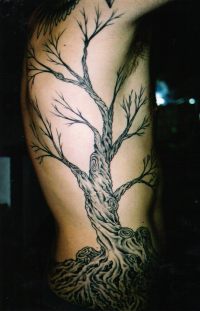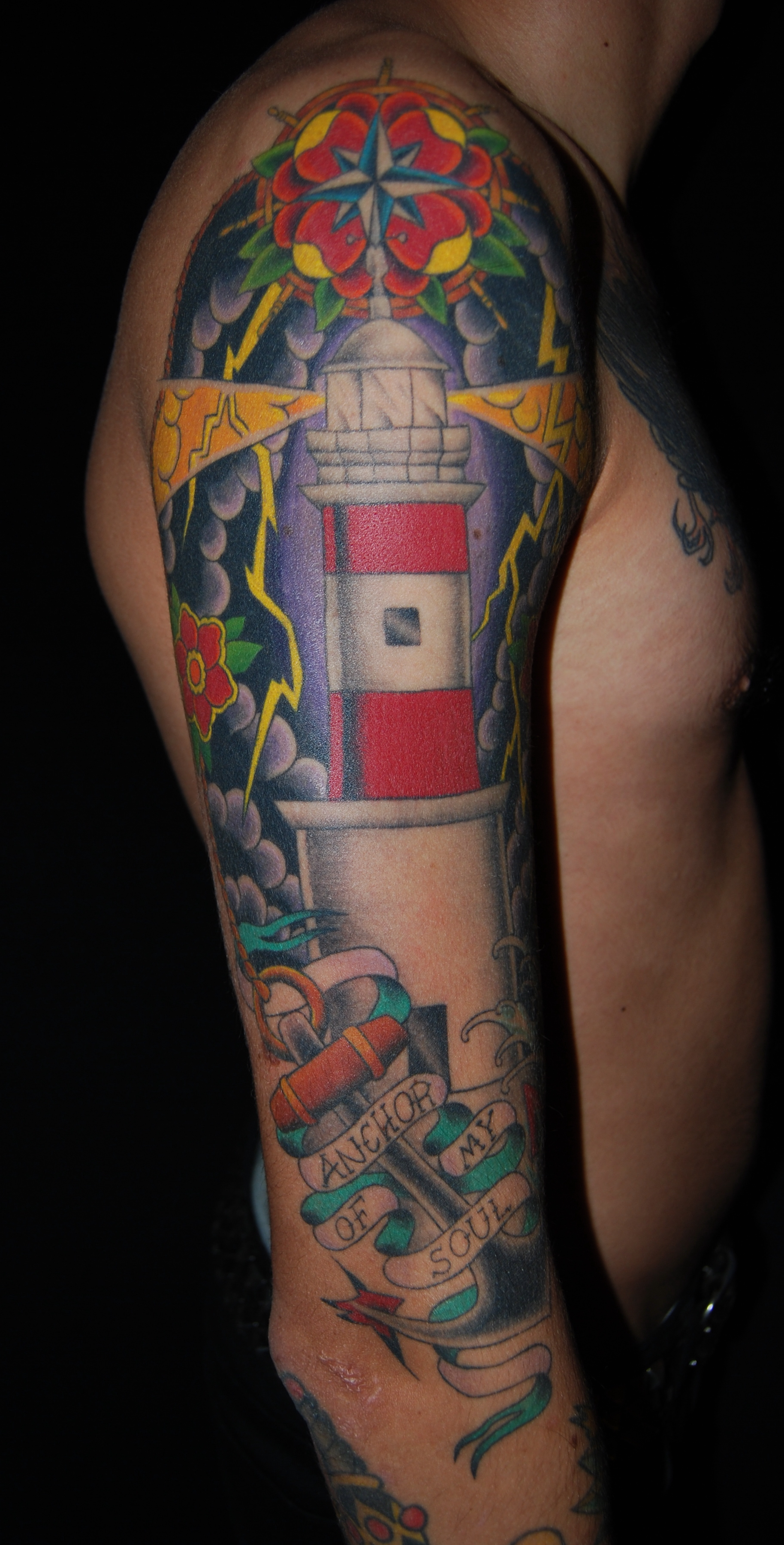by Katie Herlihy, 02 February 2012
reposted from SparkJam
In November 2011, my husband and I traveled to Tana Toraja on the Island of Sulawesi in Indonesia for our honeymoon. Toraja is a Bugis word which means people (to) of (ra) the hills (ja). It’s a derogatory word, like hillbilly or redneck. Some of the seafaring Bugis also live in the Torajan hills now, and it is from their plundering pirate traditions that we get folk stories about the “Boogieman.” Tana Toraja was an intense experience that neither of us will ever forget.
We walked up a muddy road in the rocky hills north of Rantepao with women wearing black lace scarves over their heads to protect them from the pounding sun, boys carrying pigs tied to bamboo balanced on four shoulders and our two guides, Jack and John, who helped us make sense of everything that we were seeing. We too wore black and carried with us a case of cigarettes obtained at the Rantepao Market as our gift for the family.
Funerals are held at the family home, and people come from all over to attend so they can pay their respects to the dead, settle their debt and in a way, gain good karma for the day they too go back to the earth. Although most Torajas are now Christian, the funeral ceremonies are decidedly a part of the animist religion of older, distant generations.
For us, we were in search of an experience that we couldn’t gain anyplace else on the planet and hopefully, new insights into the way cultures different than our own accept and grapple with grief and the end of life. I was intrigued by the intimacy and even the grittiness of Torajan practices in comparison to The West – the fact that this was a celebration and “the most important event of a Torajan’s life.”
As we began climbing the mud driveway with grooves carved thick and deep by wheels of motorbikes and trucks, the squeals of the pigs got louder and more frantic. There were hundreds of local people huddled under tarps and sitting on leaves, tarps and blankets. Some were sitting in lotus positions, some sprawled out leaning against friends and laughing, all drinking palm wine, sweet black coffee or tea and nibbling on fried honey cakes and dried bananas. We were invited to sit down by a family. Everyone stared, interested in our color tattoos. Nearby some men cooked a traditional Torajan dish of pork stuffed in bamboo and roasted over an open fire.

palm wine
This is one of the reception days. A dead body will stay in a Christian family’s home while the family prepares for the celebration. This could take anywhere from a year to ten years, depending on the class of the family and the size of the funeral. In the past, the body was preserved with medicinal plants from the surrounding jungle. Unfortunately, the jungle has been deforested, and what is left is new growth. Some of the plant species used for preservation have disappeared. Now, embalming fluid is used to preserve the bodies in preparation for the funeral.
The deceased family member is treated as they were when they were still alive. They take part in the daily activities of life, including meals and conversation. The dead are considered to just be “sick” for this period of time, and their soul has not passed until they are put into a rock cave. In this case, it was a woman who had died. Often women have larger funerals than men because Toraja is a matrilineal society, descent is traced through the women.
The funeral is an expensive event. Temporary bamboo structures are built for non-family members to sit sheltered from the sun. Money must be saved to buy many pigs and buffalo for sacrifice. At this ceremony, roughly 40-50 pigs were sacrificed over the course of several days, in addition to some water buffalo. This family’s prized buffalo is a beautiful beast, white with brown spots and the bluest eyes with rectangular pupils. At some ceremonies, 300 pigs and hundreds of water buffalo are sacrificed.
 dinner preparation
dinner preparation
When the family is ready for the ceremony, the first day the body is brought to the place where the ceremony will take place. There are several days of reception (1-3) to allow family from far away to have time to travel and attend. The next day is officially for sacrifice, although the buffalo and pigs and chickens are sacrificed on other days as well, and this is followed by the day that the body is transported to the grave.
The Master of Ceremonies announces each family group, and a procession forms through the main square of the family’s property. Each group presents the family of the deceased with a gift of pigs and/or cigarettes.
When our time came, we climbed clumsily up the muddy embankment with the women and men of the family that we joined. The path was lined with others awaiting their turn, more pigs tied to bamboo, piles of excrement, pools of blood and flies. It smelled of farm animals, shit and roasting pork. The mud was so thick, it threatened to pull off our shoes. There were a few lonely flip-flops left in the mud, abandoned. The pigs continued to writhe and squeal.
 lamentation for the dead
lamentation for the dead
After we passed through the square, there was a war dance offered to the family by a man wearing a headdress of buffalo horns and feathers. He went into a trance with eyes darting quickly and rolling back into his head. He was followed by family members, the women dressed in traditional beaded outfits, and women and men from the highest class. The women wore bamboo hats like those worn in the rice fields.
 dancer
dancer
We were invited to one of the temporary shelters to escape the sun and eat some food. We were each given a piece of paper which we fold into blunted off cone shapes. We scooped in rice, very spicy local vegetables and some of the traditional pork dish (mostly fat and vertebrae) washed down with a splash of sweet, thick coffee or palm wine, drunk out of bamboo. Some of the women carried small velvet bags with orange embroidery on them, holding their betel nut, which is a mild stimulant found throughout the Tropical Pacific, wrapped in leaves and chewed for stress reduction and heightened awareness, something like coca or tobacco.
 spicy pork
spicy pork
As this was happening, we watched a pig get sacrificed. The pig was laid on his side, and he let out a scream. The children poked him with sticks. A man used a long blade to stab under his armpit into his heart, and the pig let out a gurgling squeal that quickly faded into silence. When the blade came out in a swift movement, blood sprayed out in two consecutive, delicate arcs of red creating a thick splash and puddle in the mud and grass. He died quickly, and the man held his flip flop to the wound to keep the spray to a minimum. The man immediately began cutting the pig from the bamboo. He used a hatchet on the string. Then, with the help of the small boys, they cut out the stomach by holding back the leg and slitting down the center after the pig had bled out. The guts were pulled out with their hands and the carcass was tossed on the fire. The skin turned black and blistered, searing off the hair. Then they quartered the body with a machete.
 cooking pork
cooking pork
Back on the road up the mountain, we passed another funeral ceremony drawing to a close. Off to the side of the road there is a coffin. It’s red, blue and gold with a cross on the head and foot of the casket. People are cheering. Teenage boys held Roman candle fireworks in their hands and shoot the explosions in the sky. More teenagers were having a water battle throwing cups of water at each other as hard as they can. The group then labored to carry the coffin on bamboo down a hill to a rock grave. The body will join other family members in the rock tomb.
Muslim Torajans do not practice the same funeral and burial techniques. They are required to bury the body before sunset. The body is rubbed with a specific leaf from the forest, wrapped in white strips of fabric and buried.
We spent the next several days trekking in the hills and rice fields around Batutumonga and Rantepao, checking out the tau-tau grave carvings (wooden effigies to the dead), the baby graves (babies under two years old who have died prior to acquiring any teeth are considered sacred and are placed inside a tree so that they can “grow up”) and then going to another pre-funeral event at night close to the farm where we stayed during our trek.
We walked down the rocky country road from our home-stay to a family compound about ¼ mile away. The family was having a ceremony. A person had died two years prior, and they were still in the house while the family saved money for the funeral. The men of the family stood in a circle grasping pinky fingers, chanting hypnotically and dancing very slowly to the oohhhhs and aaahhhhs of their lamentation for the dead. Very slowly, they swayed back and forth, putting one foot ahead of the other. The feet changed with the aaahhhhs and ohhhhs. The arms swung down to the sides with a slow, sure rhythm. When my husband first entered the circle, there was lots of hooting and hollering. I entered too after much assurance from our guides that it was okay. The elder next to me had a strong grip on my pinky, and he kept me in sync with everyone else. Some of the men seemed like they wanted us there, the elders in particular. It seemed the younger men were uncomfortable with us joining their family gathering. The women and girls served coffee, tea, palm wine and cookies.
I feel very lucky to have had the opportunity to have such an intimate experience with the families that we visited in Torajaland. I walk away, not with a better understanding of death and the ever mysterious question of what happens to our soul when we pass away, but with a slightly stronger connection to life and a fueled desire to learn and see more of what this blue planet has to teach us.
 blue-eyed buffalo
blue-eyed buffalo
Katie Herlihy lives in Berkeley, CA with her husband and Dog









